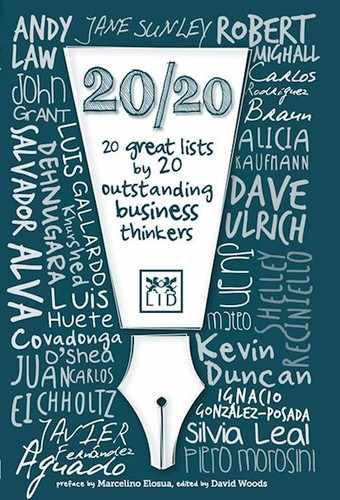6.
CHALLENGE AUTHORITY AND EXPERTISE
“Our freedom to doubt was born of a struggle against authority in the early days of science. It was a very deep and strong struggle.”
We began the first chapter in this book with the story of Vesalius (see page 34), to whom we now return. The year 1537 was one of rich learnings for Vesalius, who fast-tracked his studies and completed his medical degree in less than 12 months. Shortly after his graduation he was appointed professor of surgery and anatomy at only 23 years of age. In this new role Vesalius was able to spend most of his time focusing on what he loved most – dissecting and exploring in great detail all parts of the human body. Records of notes he made of his first public dissection in December 1537 provide a great insight into his groundbreaking approach and signal the beginning of what later became his challenge of Galenism.
For the first time in the University of Padua’s history, a medical professor broke with tradition. Vesalius stepped down from his throne, took a scalpel in his own hands, dispensed with both the surgeon and the demonstrator, and started cutting into the body of an 18-year-old male. As was the custom of the day, he first opened the abdominal cavity, then the thorax, moving on to the head and neck, then the brain and lastly the extremities.90 At
some point he used a dissected dog for comparative purposes, which later became his teaching trademark. The most striking thing about this dissection, though, was not Vesalius’ willingness to get his hands dirty – literally, but his decision to use his own observations during the process and form his own judgements, rather than rely solely on Galen’s texts. His notes are a record of his detailed observations and his approach during the dissection: “I gave careful consideration to the possibility that anatomical dissection might be used to check speculation.”81
Vesalius’ first dissection at the University of Padua marks the beginning of an extraordinary career. It was then that the seeds were sown for his core philosophy, which would shape the course of modern anatomy – that is, to refuse to accept past authority until his own research and studies had proved it true.82 Over the coming years his dissections came to be seen as the most extensive anatomical investigations of his time. His research exposed more and more mistakes by Galen and consolidated the view that Galen was not infallible. He noted “The descriptions of Galen ... are not always consistent.”83 Vesalius discovered many discrepancies, including the fact that the human breastbone was made of three segments rather than seven as Galen had claimed, and that the humerus (the upper arm bone) was not the second-longest bone in the body but the fourth. He was no longer a faithful follower of Galen’s entrenched authority.
Vesalius’ groundbreaking work drew admiration from students and scholars alike, but the staunch Galenists of the time criticized him for his disobedience, seeing him as a mere dissector with a scalpel. Whilst he would regularly draw over a hundred people, mostly young students, to his public dissections, the more conservative members of the audience would often walk out in disgust at his pedagogical techniques.84 Vesalius’ biggest breakthrough came when he realized that Galen had not based his findings on the dissection of human bodies, but on those of monkeys, pigs and goats. As human dissections were illegal during Roman times, Galen had had to resort to dissecting animals to learn about the human body.
It only took Vesalius two years to launch a full challenge to Galen’s work. To show students how wrong Galen had been, he gave lectures in which he compared skeletons of humans with those of animals, illustrating the discrepancies. He gave students the opportunity to test Galen’s claims by using their own observations and forming their own judgements about the human body. He spent the next four years developing an extensive anatomy book based on his own studies and discoveries. He called it De humani corporis fabrica libri septem, or The Seven Books on the Structure of the Human Body, commonly known as The Fabrica. Published in 1543, Fabrica fully severed with the bonds of Galenic tradition and launched Vesalius’ pioneering approach in anatomy based on independent observation and exploration.
Vesalius set a new course for the medical profession and influenced the work of countless scientists to come after him, including Darwin’s evolutionary theory 300 years later. Padua became the most famous anatomical theatre in Europe and the university is to this day recognized for its freedom of thought in study and teaching.
Vesalius had to close his eyes to existing knowledge to be able to see something new. Sometimes we need to put aside the existing agreed knowledge. We need to challenge the presumptions of knowledge people have taken to be truth over time. This deliberate “putting aside” of the existing agreed knowledge enables exploration “as if” there was no current knowledge. This enables discovery and challenging what we thought was truth but in fact was just a “truth in time,” a view seen to be true at a point in time.
English author and economist Noreena Hertz in her TED talk on “democratizing expertise” urges us to be ready and willing to challenge experts, to question the evidence, the assumptions and the potential omissions. She advocates creating a space for managed dissent, where expert ideas are aired and debated. This necessitates an environment where knowledge from divergent, discorded and heretical views is not only allowed, but encouraged where the focus is not on displaying our expertise, but on wrestling with the most challenging issues at hand.
